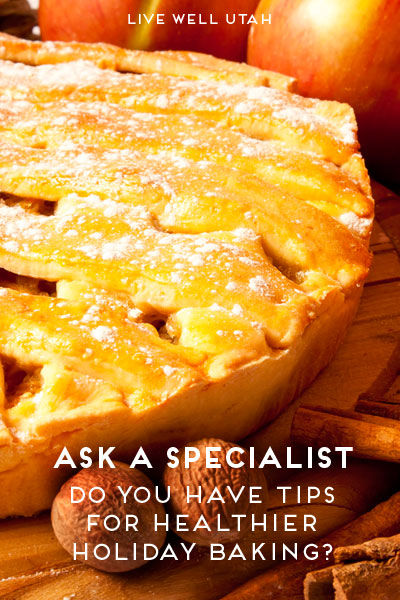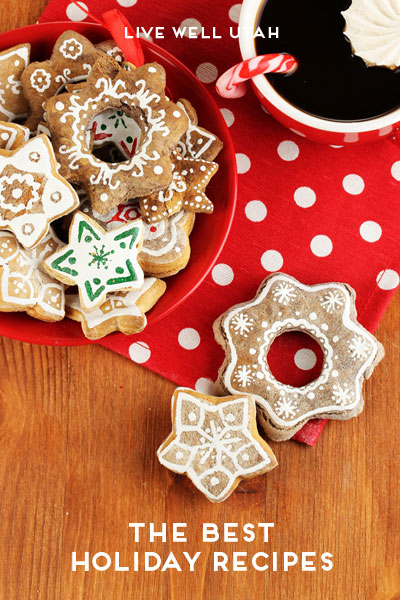
Thinking of getting a live Christmas tree this year? Consider these tips from forestry expert Michael Kuhns.
In late November and early December, Utahns head for their local Christmas tree grower or tree lot to purchase this year’s Christmas tree. Selection of a good tree and care for that tree once it is home can help you have a happier and safer holiday season.
Choosing the Perfect Tree
Size is the first thing to consider when getting a Christmas tree. Measure the spot for the tree including width and ceiling height. Remember that several inches will eventually be cut off of the butt end. The stand, on the other hand, may add several inches to the tree’s overall height.
Several types of Christmas trees are available, including cut trees, potted or balled trees, and artificial trees.
Cut Trees
Cut, live trees are the most common type of Christmas tree. Three options are available to a person wanting a cut Christmas tree— a precut tree purchased from a dealer, a choose-and-cut tree purchased from a local grower, or a wild-grown native Christmas tree.
Freshness and moistness are the keys to having a Christmas tree that will last through the holiday season. Once needles dry out on a tree they usually stay dry, even when the tree is placed in a stand with water. The best way to ensure that your tree is fresh is to buy from a local grower or from a retailer you know and trust, either at a choose-and-cut operation or at a lot.
Trees shipped into Christmas tree lots from out of state may be fresh, but sometimes are old and dried out. Follow these steps to be sure that the tree you are buying is fresh and of high quality:
- Gently pull on the needles. They should be tightly attached to the twig.
- Shake the tree vigorously or bounce the butt on the ground. If green needles fall, look further. Dead, brown needles falling from the inner part of the tree may have been shed years ago and are less of a problem.
- Check that the tree has a fresh, green color. Some trees are sprayed with a blue-green dye. This dye is harmless but be sure it’s not hiding a dry tree.
- Buy early before all of the desirable trees have been sold.
- Fir and pine trees hold needles better than spruce trees.
- Break a few needles. They should be flexible and will feel moist or possibly sticky. They should also be fragrant when crushed.
- Be sure limbs are strong enough to support lights and ornaments. Limbs should also be well placed to give the tree a pleasing shape. Minor defects can often be turned toward a wall, however, and can lower the purchase price.
- Ask the dealer if the tree was locally grown. Local trees are much more likely to be fresh because they are cut nearer Christmas and aren’t shipped long distances.
Choose-and-cut trees are available from Christmas tree growers throughout Utah. For the locations of local growers, contact your County Extension office.
Buy a choose-and-cut tree the way you would a pre-cut tree. Freshness and health are still the most important characteristics. The grower will usually have many trees marked for sale with a variety of sizes. Some growers will cut the tree for you and others will expect you to cut your own.
Once a fresh tree is brought home store it outside with the butt end in water until you are ready to decorate it. Keep it away from sun and wind so it does not dry out. It also helps to recut a thin section from the butt end if possible to open the tree’s vessels. When you are ready to bring the tree in, cut the butt end again if it has been stored very long. Your can attach a ribbon to this disc and make an ornament. The disc will have 7 to 10 growth rings, which can be used to denote important family events.
Potted or Balled Trees
Some people buy a potted or balled Christmas tree with roots intact in the hope of having a new landscape tree come spring. This is very difficult to do successfully, but your chances of success increase if the tree is treated right.
- Buy a healthy tree from a reputable nursery or grower. Expect to pay a higher price than for a typical Christmas tree.
- Keep the soil in the ball or pot moist until well after it is transplanted after Christmas. A frozen ball need not be watered if the crown is shaded and protected.
- Lift and carry the tree by the ball or pot, not the top.
- Keep the tree in the house no longer than about 1 week.
- Have the tree’s planting hole dug before the soil freezes and keep the fill dirt thawed if possible. The hole should be about the depth of the root ball or slightly shallower and three times the width of the ball.Remove packing and binding materials when planting the tree. Stake the tree for its first year, if possible.
Fresh Tree Care
Inside your house the tree should be placed in a sturdy stand that holds at least one gallon of water. A fresh tree can lose this much water or more a day, so old-fashioned small stands just do not hold enough. Place the tree away from heaters, furnace vents, televisions, or other sources of heat.
Lights on the tree should be UL approved and protected by an in-line fuse. Small, pin-point lights are good because they remain cool. Old lights with cracked insulation or loose sockets should be discarded–don’t be sentimental about old Christmas tree lights. Turn lights off when the tree is unattended. Flammable decorations should not be used on a Christmas tree with electric lights. Candles should never be used to light a Christmas tree or wreath.
A fresh tree that is watered daily can stay moist and safe for several weeks. If a tree is displayed in a public building, it generally should be kept up for no more than 15 days and should be treated with a fire retardant solution.
After Christmas
Christmas trees can be useful even after they are taken down. Trees can be placed in the yard to add greenery and act as a bird haven until spring. Christmas trees can be used for firewood or chopped up and used as a mulch. Many communities have programs to gather trees after Christmas to be chipped for mulch or other uses.
A Note on Artificial Trees
Artificial trees must be used carefully. Electric lights should not be used on metal trees because of the danger of electric shock. Light these trees with off-the-tree spotlights. Plastic trees may be fire resistant but the fumes they give off when burned are toxic.
This article was written by Michael Kuhns, USU Extension Forestry Specialist
 It’s an emergency! My house is on fire… there’s been an earthquake… my furnace is broken! These are emergencies— Christmas is not. Check out this video from our finance pro Amanda Christensen and follow her tips to plan ahead for Christmas and save your emergency fund for a real emergency.
It’s an emergency! My house is on fire… there’s been an earthquake… my furnace is broken! These are emergencies— Christmas is not. Check out this video from our finance pro Amanda Christensen and follow her tips to plan ahead for Christmas and save your emergency fund for a real emergency. Year to year your kids may forget what gifts they have given and received, but they will always remember the traditions you do together as a family.Try adding one of these activities to your annual holiday traditions.
Year to year your kids may forget what gifts they have given and received, but they will always remember the traditions you do together as a family.Try adding one of these activities to your annual holiday traditions.




 According to the National Headache Foundation, people complain of a greater incidence of tension-type headaches and migraines between Thanksgiving and New Year’s. Family stress, long lines and altered sleep and eating patterns play a key role. Consider these tips to reduce stress and tension this holiday season.
According to the National Headache Foundation, people complain of a greater incidence of tension-type headaches and migraines between Thanksgiving and New Year’s. Family stress, long lines and altered sleep and eating patterns play a key role. Consider these tips to reduce stress and tension this holiday season.

